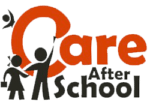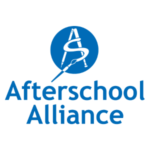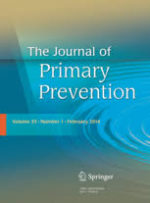Research
- General Research (47)
- High School Research (11)
The survey, conducted online in July 2007, shows the high level of importance parents place on afterschool programs. Eight out of 10 (80 percent) parents say that their child needs a safe, positive place to go to afterschool and parents said their children want the same (82 percent). Based on responses from 603 parents, it’s clear that parents believe afterschool programs are critical in steering kids away from crime and improving academic performance and overall well-being.
This publication looks at the sustainability of 21st Century Community Learning Centers. It discusses ways in which grantees and policymakers alike can promote sustainability within these programs.
A Summary of Findings Highlighting the Need and Demand for More Afterschool Programs for Children and Older Youth. (Updated April 2008)
Information on child care costs and arrangements are collected on an intermittent basis in the Survey of Income and Program Participation (SIPP). Detailed information from recent surveys and historical trends in selected areas are also listed. The Survey of Income and Program Participation is currently the only source the Census Bureau uses to collect child care information from families.
To help students meet rigorous course standards in academic and career/technical classrooms, each teacher must establish and maintain a learning environment that supports and motivates students to do their personal best. Classroom management is so much more than a set of appropriate rules and consequences. There is a skill set of strategies that teachers and principals can use to create focused and productive classrooms that help students achieve higher levels of performance. Principals and teachers can implement self-assessment and staff development programs built around the following 10 strategies.
Southeast Regional Education Board (SREB)
By Eric Schaps and Daniel Solomon
Published in The Journal of Primary Prevention, Vol. 23, No. 3, Spring 2003.
Correlation and intervention studies of school environmental factors associated with student drug use and prevention are summarized. Major factors that emerge in the correlational studies are school supportiveness, sense of community, and opportunities for students to interact and to exert influence. Similar factors are involved in the intervention studies, with the development of a sense of community and attachment to school central, although the means by which these are approached differ across projects. A common conclusion seems to be that a supportive environment increases students’ attachment to school and thereby their inclination to abide by the school’s norms and values.
With the Harvard School of Public Health and support from the Charles Stewart Mott Foundation and the Atlantic Philanthropies, the Afterschool Alliance initiated the Roadmap to Afterschool for All, a scientific study that for the first time assesses the current investment in afterschool programs from the public sector, parents, foundations and businesses, and estimates the additional investment needed from each sector to provide quality afterschool programs for all children. The research shows that parents are paying the lions share of afterschool costs, even among programs serving high poverty children, and that funding of all types is insufficient.
This toolkit was developed in partnership with the New England Network for Child, Youth, & Family Services, Social Policy Research Associates and the University of Kentucky Department of Community and Leadership Development. This practical, easy-to-follow tool kit is designed for adult and youth staff at youth development and youth civic engagement organizations. It guides readers as they assess their organizational needs for evaluations, design evaluations to fit their organizational goals, and use evaluation data to report to funders and other community stakeholders.
National Center for Community Education (NCCE). This guide organizes resources into six areas necessary for the successful operation of after-school programs: Management, Communication, Programming, Integrating K-12 and After-School Programs, Community Building/ Collaboration, and Evaluation. The resources complement the training curricula developed by the NCCE Training Task Force for 21st Century Community Learning Centers.
This report looks at programs that have proven to be effective for youth development and employment. Through these summaries, the American Youth Policy Forum hopes to give youth professionals and policymakers an understanding of the principles and characteristics of successful youth development programs so that they may be replicated.
This brief illustrates several benefits of after school programs, such as improved literacy skills, enjoyment of recreational reading, and building positive relationships with adults, which reading activities in afterschool can offer to participants.
by Eric Schaps
Published in Perspective, Journal of the Association of YMCA Professionals, October 2005.
Eric Schaps discusses how to improve afterschool programs by building a sense of community with schools. He discusses the importance of community building, creating safe and fun spaces for students, and integrating academic and social skills into activities.










